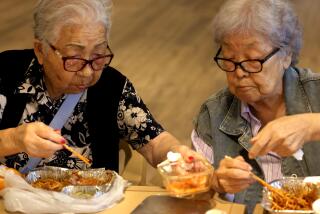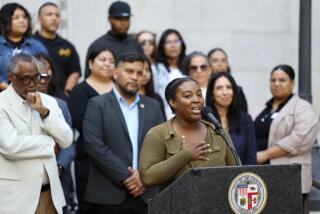Column: End L.A.’s free meal deliveries? Recipients ‘pray God’s grace and implore City Hall’ to reconsider
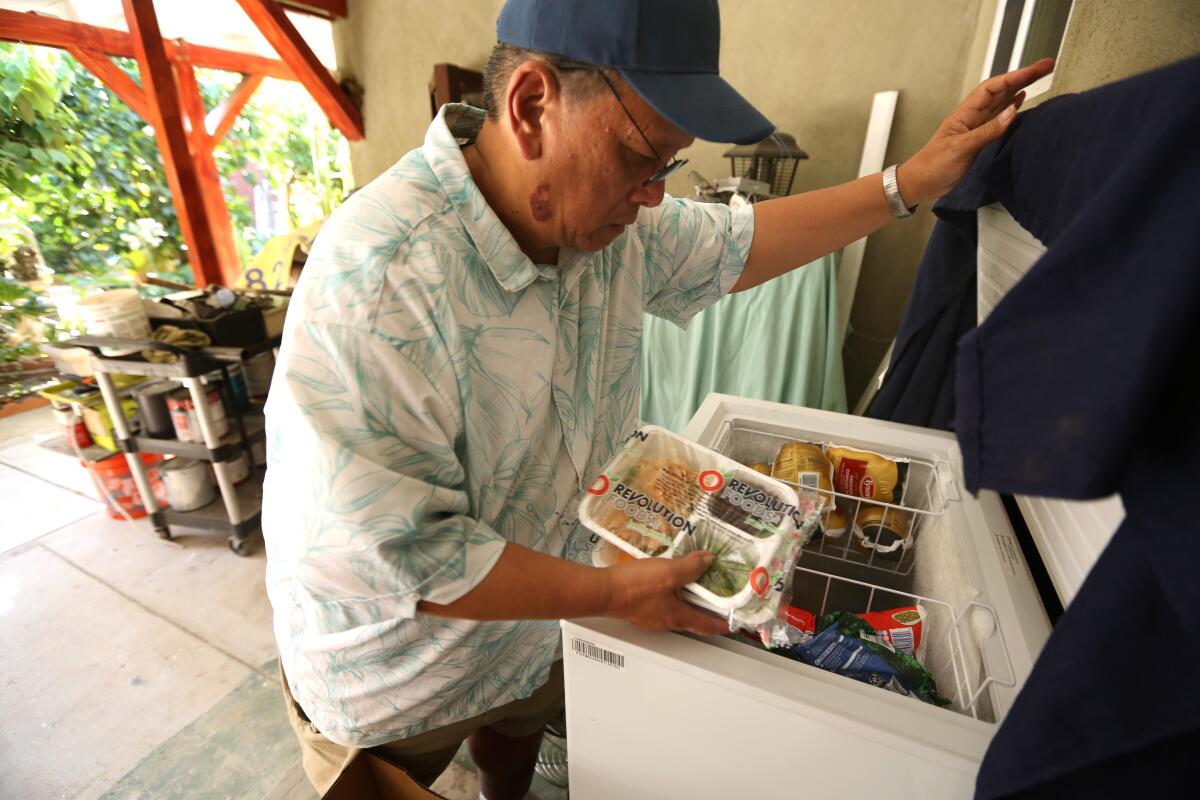
Leo Del Rosario was renting space in a friend’s Panorama City apartment for $900 a month. But since recovering from heart valve surgery last year, he’s only worked sporadically as a nurse’s aide.
So everything is tight, including the food budget.
“Not to be overly dramatic,” he said — but he has learned how to stretch a jar of peanut butter. “You do what you have to do, right?”
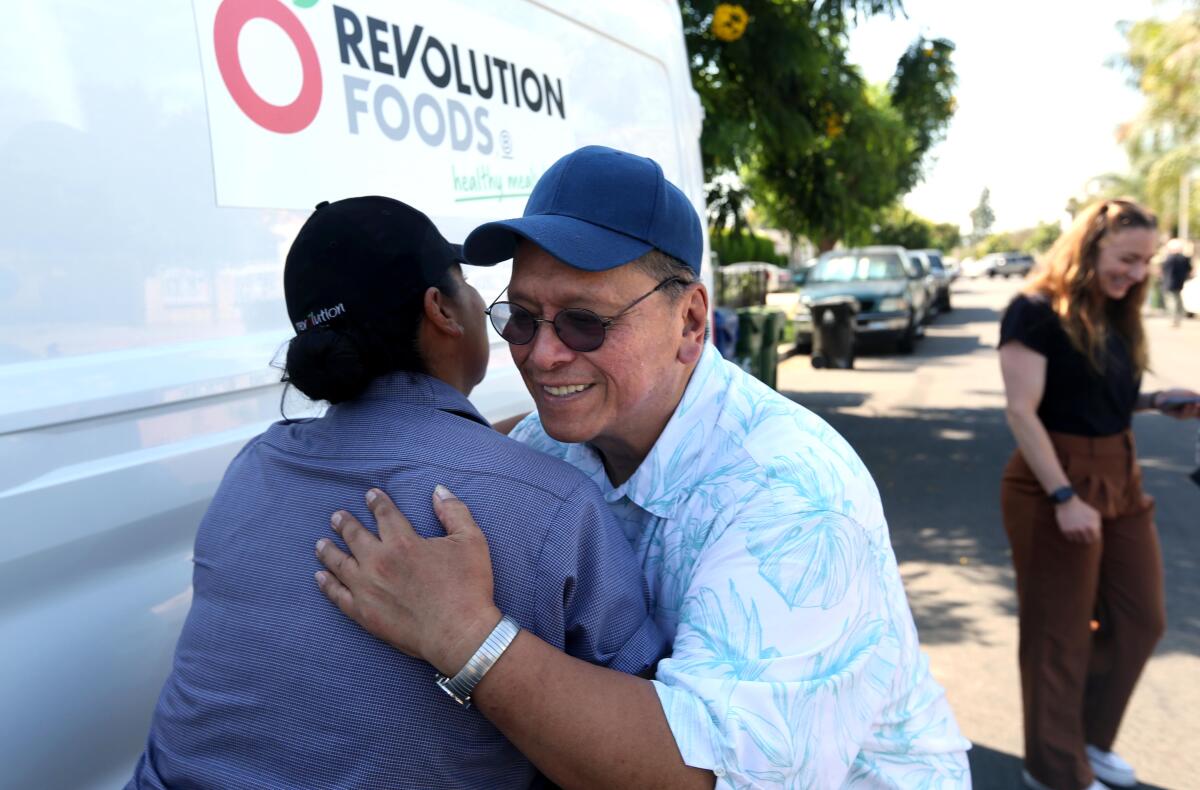
On July 1, Del Rosario, 60, came up with another way to cut costs. He moved out of the apartment and began renting a room in a nearby four-bedroom house. “This was $100 cheaper,” he said outside his new home on a recent morning.
His budget is still tight, though, so the weekly delivery of free food through L.A.’s Rapid Response Senior Meals Program has been a lifeline.
California is about to be hit by an aging population wave, and Steve Lopez is riding it. His column focuses on the blessings and burdens of advancing age — and how some folks are challenging the stigma associated with older adults.
But now that program — which has delivered frozen meals to as many as 5,800 homebound people 60 and older each week since late last year, with 1,400 more on a waiting list — is scheduled to get chopped at the end of August.
As if on cue, the food delivery van’s battery died after pulling up to Del Rosario’s home the morning I met him.
So what’s he going to do?
There’s always peanut butter, he said. He also knows from growing up in the Philippines how to take some rice, add a bit of fish or brisket, and make it last, although escalating food prices don’t help. He’ll call on friends and family, too, but try not to become a burden.
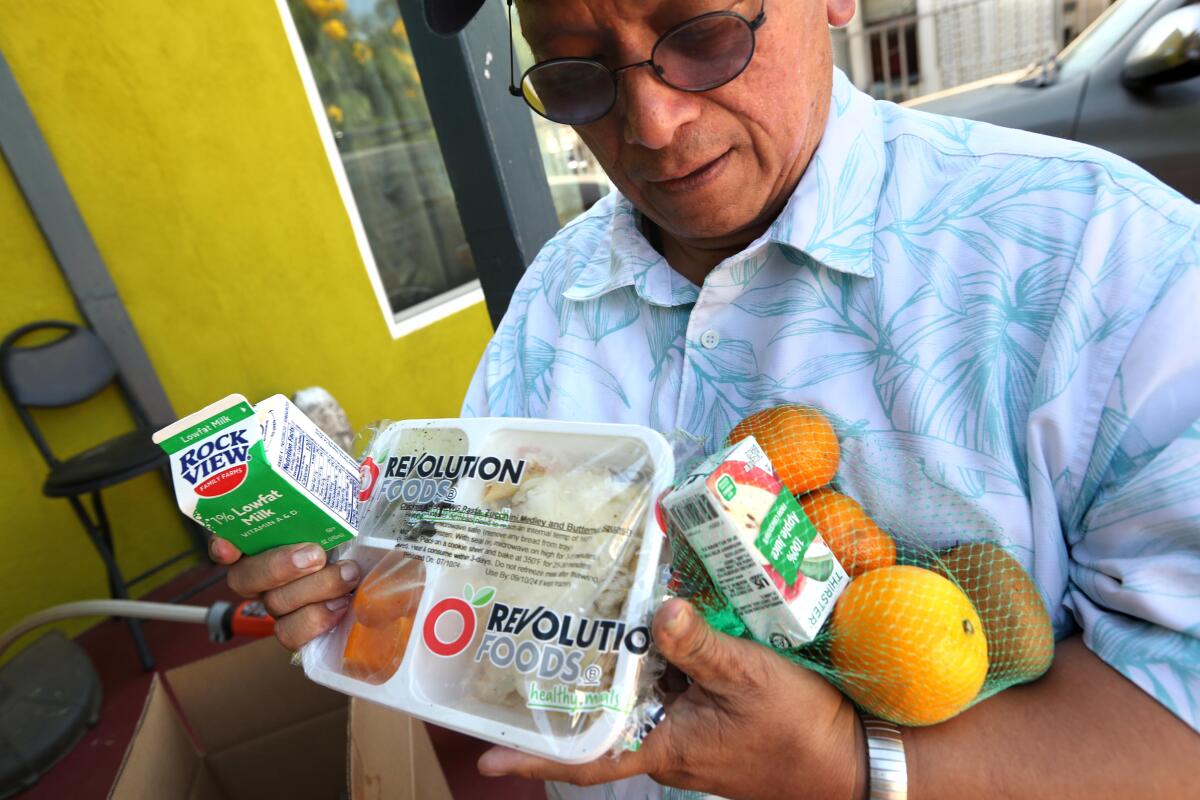
“I will pray God’s grace, work hard, and implore City Hall” to reconsider, Del Rosario said. “How we take care of our elderly is a reflection of ourselves and our society.”
Councilmember Heather Hutt agrees, and said she isn’t ready to give up on extending the program, even though it’s already winding down and a proposal to keep it alive is all but dead in a City Council budget committee.
“I’m looking for it to be rescheduled for a more robust conversation, so I can fight for it,” Hutt told me. “I’m not giving up.”
The program has cost about $11 million at a time when city leaders have had to make tough budget choices. A version of the program began during the pandemic, but “it was never meant to continue in perpetuity,” a spokesman for City Councilmember Bob Blumenfield told The Times earlier this year.
One argument for its discontinuation is that several other food programs exist, including daily meals at senior centers. But that doesn’t work for Hutt, whose district includes parts of Koreatown, Mid-City and South L.A.
“There are a lot of seniors that can’t get to senior centers,” said Hutt, who has more program recipients (634) in her district than any other except Councilmember Kevin de Leon’s 14th District (which has 659). “And it’s not just a meal delivery; it’s a relationship” with the driver who drops off the meals, she said. “To those that are shut in, that’s important.”
In a report to the City Council on June 24, the L.A. Department of Aging said it planned to refer meal recipients to other programs or to food pantries, but acknowledged that those options could be problematic for those with transportation issues, and for senior centers that can’t absorb the new demand.
“Some programs are fee-based, with a sliding scale depending on the senior’s ability to pay, some may have limited home-delivery options, and some may provide only pick-up options,” Jaime H. Pacheco-Orozco, general manager of the city Department of Aging, said in his report.
He noted that “nearly a quarter of older adults in Los Angeles subsist on incomes that are at or below 150% of poverty level,” and said that “over time, malnutrition leads to poor health outcomes, longer hospital stays, and higher health costs for seniors.” That is particularly true in neighborhoods with high concentrations of Black and Latino residents.
“What I worry about is that we’re pulling the rug out from under a program without other things in place,” said Kayla de la Haye, a USC associate professor and director of the university’s Dornsife Institute for Food System Equity. “As wealthy people in particular transition to food delivery and easier access to food, we see stores closing” in lower-income L.A. neighborhoods.
The food van that conked out at Del Rosario’s house was from Revolution Foods, one of the vendors in the city’s delivery program. Chief Executive Dominic Engels told me that if the program dies, it will at least have helped “heighten the level of awareness for what the true need is” in a city with high rates of poverty and food insecurity among older adults.
Del Rosario’s delivery this day included a turkey burger with sweet potatoes and peas, pork lo mein, a beef burrito bowl, chicken Alfredo with pasta and zucchini, chicken with brown rice and green beans, and fresh fruit and milk.
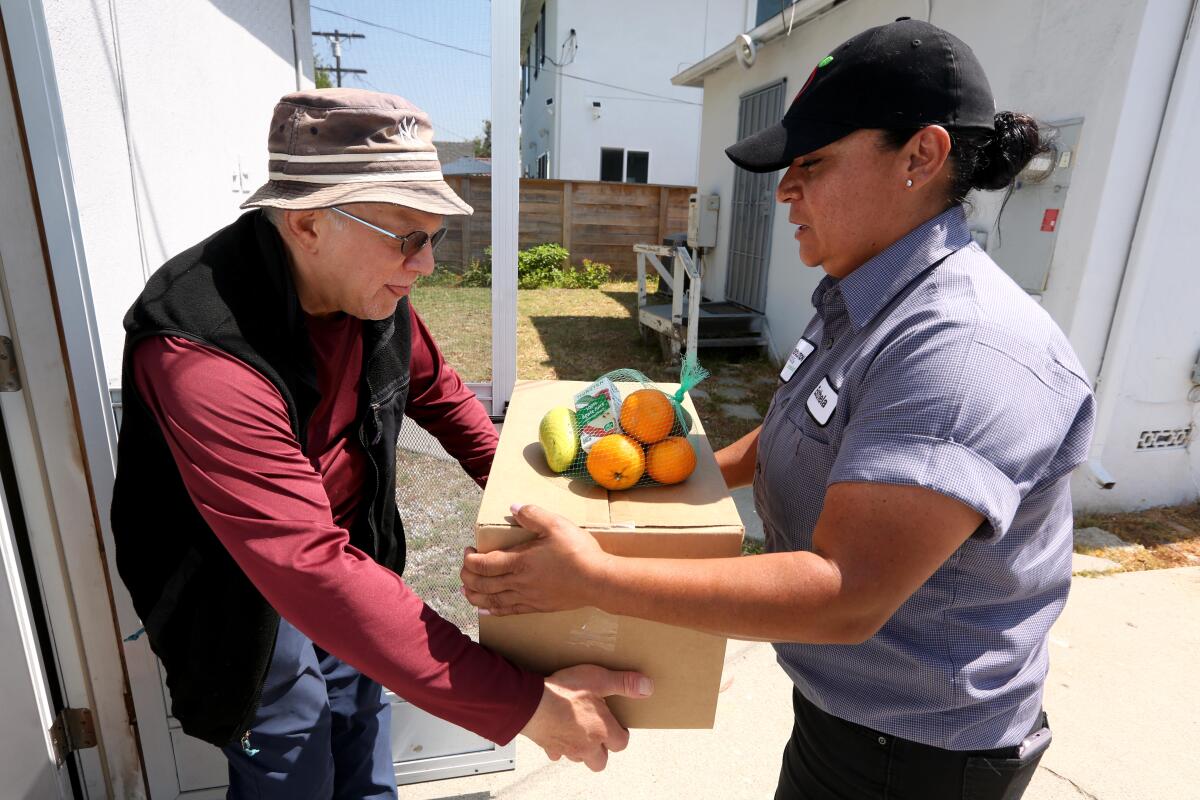
While Del Rosario peeked into the box, an AAA service truck arrived to jump the delivery wagon’s battery. The next stop was the Mid-City home of David Greenwald, 68, a marketing communications specialist who lives in an accessory dwelling unit.
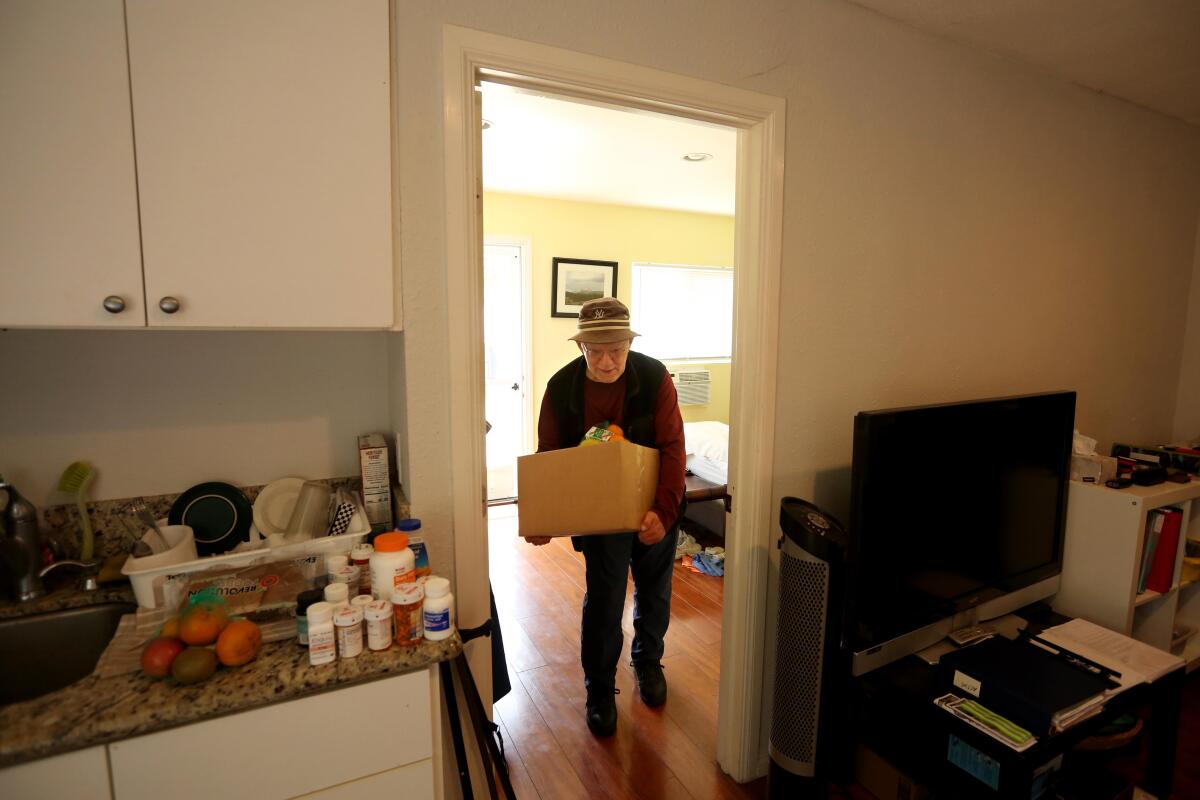
Greenwald has had left-side paralysis since he suffered a stroke three years ago. He told me in his kitchen that as a former New Yorker, his attitude is to neither quit nor complain. But getting to the grocery store, hauling food home in his backpack, and cooking are big challenges.
“The big difficulty for me is really in food preparation, because obviously, if you only have control over one hand, it’s very hard,” he said.
The weekly delivery of five meals greatly simplifies his life.
“You put it in the microwave, and in five minutes, it’s ready,” Greenwald said.
In June, a number of meal recipients sent pleas to the City Council asking for the program to be continued.
“I am a physically disabled senior aged 75. I cannot drive and public transportation is dangerous,” one recipient wrote. “If these home deliveries are stopped, I will surely starve.”
Another comment came from Harvard Heights resident Susan Richey, 76, who wrote that she prioritizes her rent to avoid becoming homeless. But that squeezes her food budget, so “it was a godsend” to discover the meal delivery program.
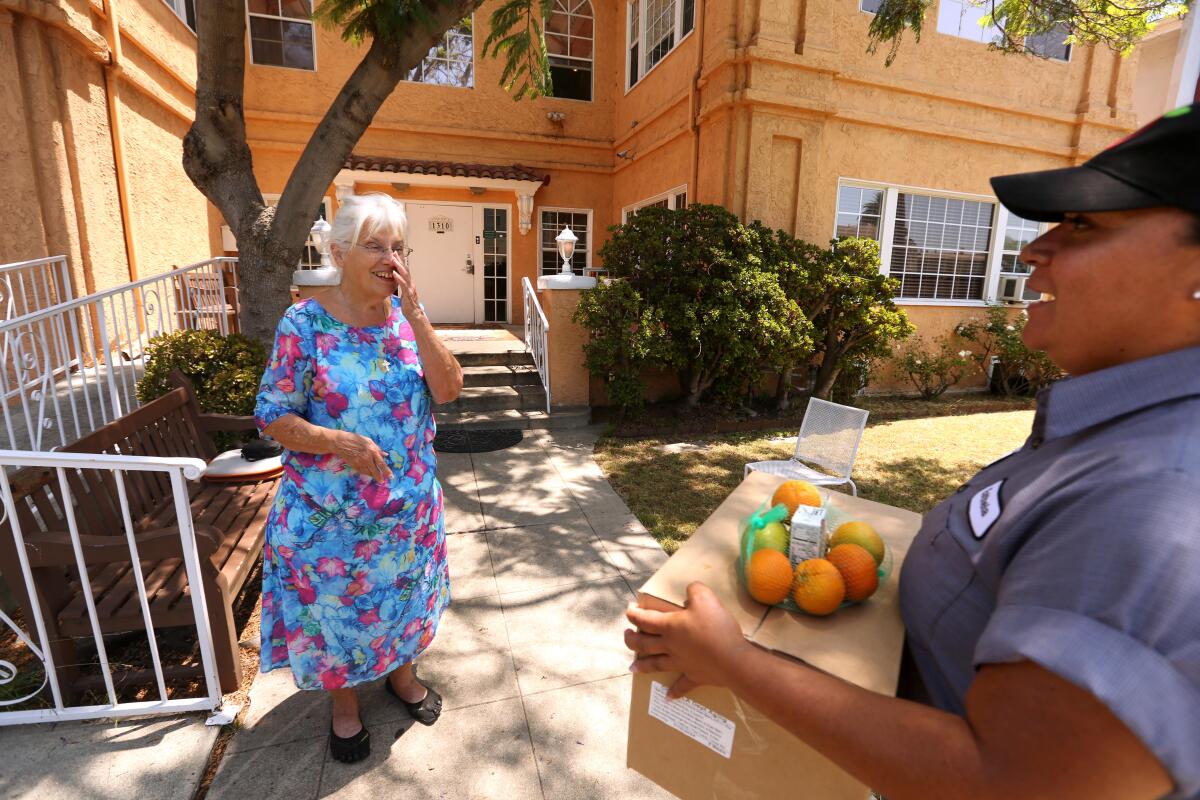
I visited Richey at the 30-unit rooming house where she pays $925 a month for a bed in a tiny shared unit. She said she’d have to walk a mile and a half to get to a senior center, but that can be dangerous in a neighborhood with a lot of people living on the street. There’s a market nearby, but food is expensive, Richey added.
“I can’t get food stamps because my income is more than $2,000 a month” from a small pension and Social Security, she told me. So she depends on the food delivery, especially because it always includes fruits and vegetables. “It’s enough to sustain me.”
“My challenges in old age are getting more difficult, and the anxiety and stress this causes me is sapping my energy and will-power,” Richey wrote in her public comments for the City Council. “I never expected old age to ... be a battle between paying rent and buying food.”
More to Read
Sign up for Essential California
The most important California stories and recommendations in your inbox every morning.
You may occasionally receive promotional content from the Los Angeles Times.


